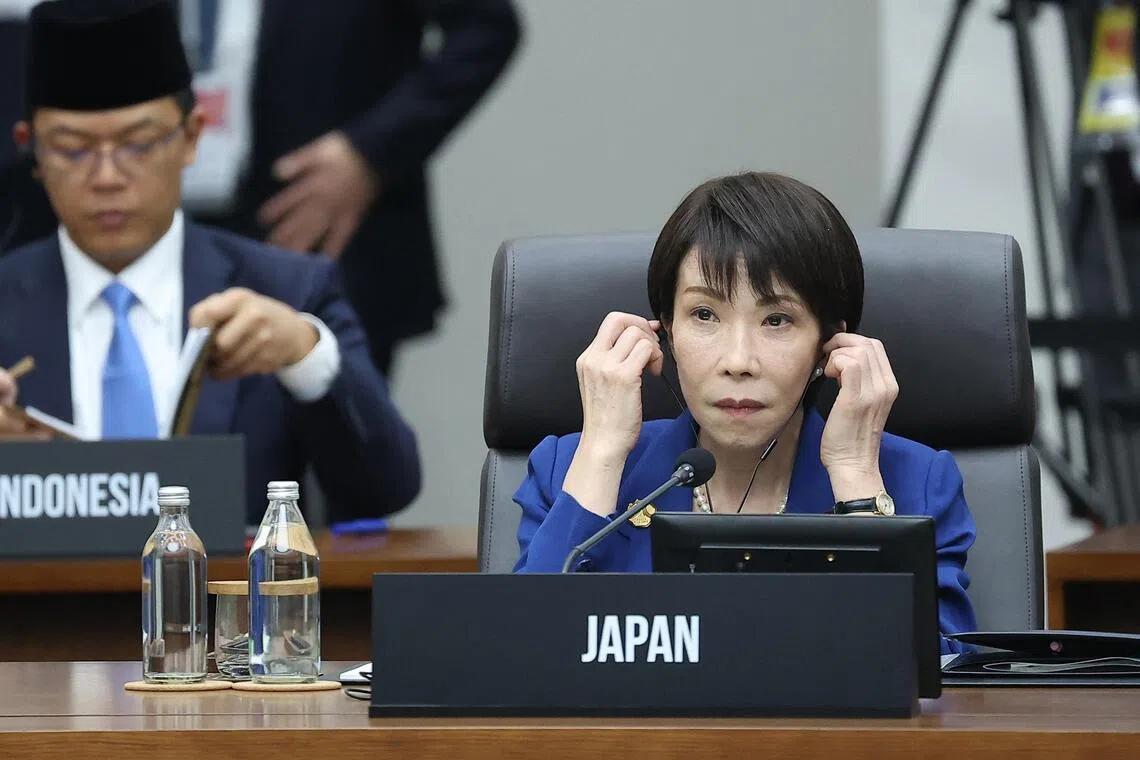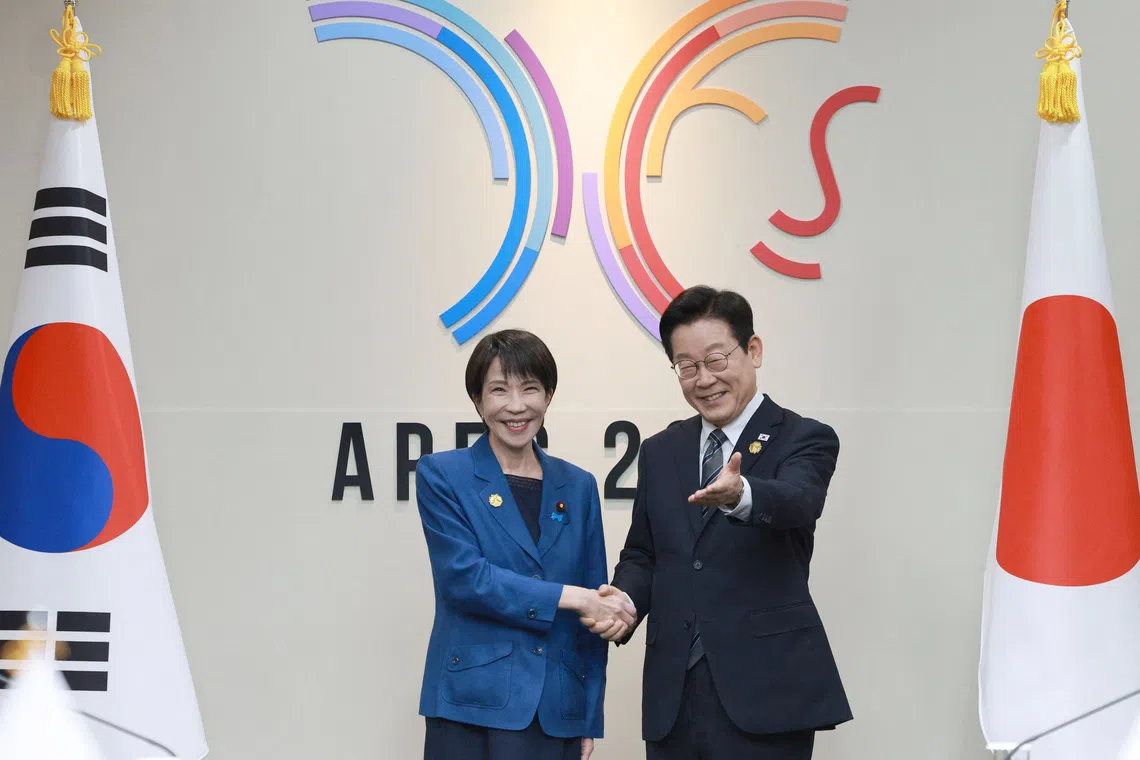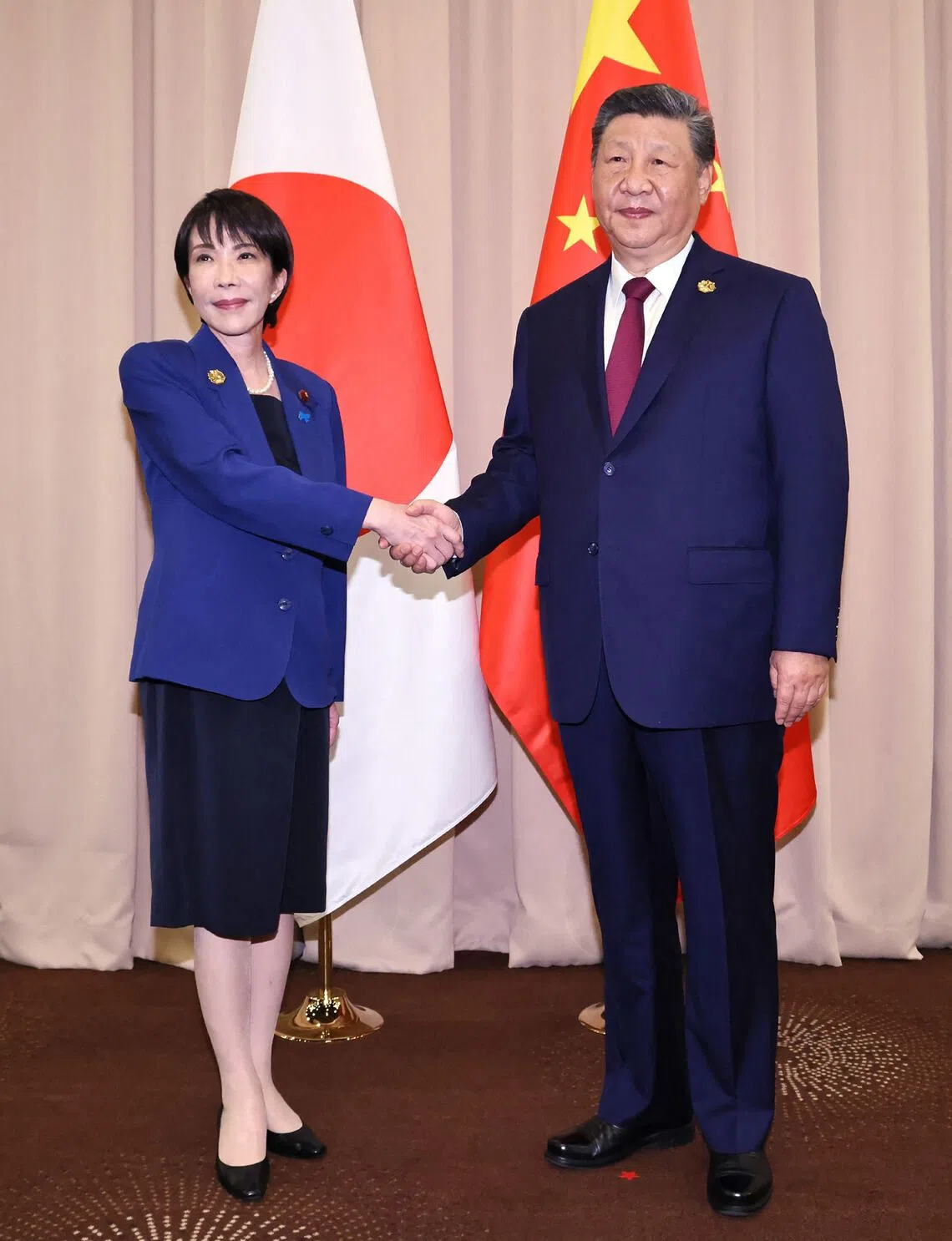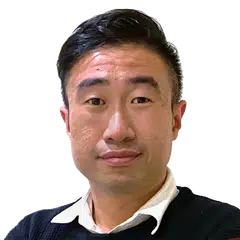News analysis
Japan PM Takaichi’s debut summits with China, South Korea reflect pragmatic foreign policy
Sign up now: Get ST's newsletters delivered to your inbox

Observers say Japanese PM Sanae Takaichi's foreign policy approach appears rooted in pragmatism and realism, and prioritises continuity over conflict.
PHOTO: AFP
Follow topic:
- Prime Minister Takaichi's diplomacy aims for regional stability despite past hawkish views, prioritising pragmatism in foreign policy.
- Takaichi's meetings with Presidents Xi and Lee signal a focus on cooperation, downplaying historical disputes for economic and security interests.
- Takaichi’s softened stance, symbolised by gestures and dialogue, intends to build stable, forward-looking relations with China and South Korea.
AI generated
TOKYO – Japanese Prime Minister Sanae Takaichi capped a busy week of diplomacy by calming regional jitters that her hawkish and ultraconservative views as a lawmaker would destabilise international relations.
Observers told The Straits Times that her foreign policy approach appears rooted in pragmatism and realism, not ideology, and prioritises continuity over conflict.
This was evident from her meeting with Chinese President Xi Jinping South Korean President Lee Jae Myung
Ms Takaichi, who became Japan’s first woman leader hosting US President Donald Trump
The quick-fire succession of engagements served as her introduction to the global stage. As a lawmaker, the 64-year-old had fostered close ties and proposed a “quasi-security alliance” with Taiwan, the self-governing island that China considers a renegade province, and expressed views on Japan’s wartime history deemed revisionist.
“Statements made as a member of Parliament differ from those made as president of the ruling Liberal Democratic Party (LDP) and as prime minister of Japan,” Dr Shin Kawashima, a Sino-Japan expert at The University of Tokyo, told ST.
“However, while keeping efforts to normalise Japan-China relations, she must also prioritise Japan’s national interests and ensure peace and stability in East Asia,” he added, emphasising that security issues including over Taiwan will be addressed strictly under the framework of the US-Japan alliance.
South Korea’s President Lee has also similarly moderated his political positions. As opposition leader, he had stridently denounced Japan as an “enemy nation”
But he has since inherited his predecessor Yoon Suk Yeol’s “shuttle diplomacy” approach, characterised by regular meetings between leaders to foster bilateral ties.
Dr Kan Kimura, an expert on Japan-South Korea relations at Kobe University, told ST that there was a clear political will among the leaders to separate contentious territorial and historical issues from urgent economic and security issues.
“While respecting and managing differences, the key lies in building a cooperative, forward-oriented relationship that yields concrete benefits for both,” he said.
Experts see the unpredictability of the Trump administration as a catalyst for the warming of ties in East Asia. While both Japan and South Korea are US security allies, Japan and China share concerns over the impact of US tariffs on global supply chains, given the size of their trade relationships.
Ms Takaichi acted quickly to allay lingering concerns by moderating her conservative views since her election as LDP leader on Oct 4, even before she became prime minister.
For one, she avoided the controversial Yasukuni Shrine, seen by Japan’s neighbours as a potent symbol of militarism over the 14 Class A war criminals enshrined there among the millions of war dead, during its Oct 17-19 autumn ritual, despite her previous visits.
On Oct 21, she quipped at her inaugural press conference as prime minister that she loves eating South Korean seaweed, uses South Korean cosmetics and watches South Korean dramas, as she vowed to foster close ties.
Three days later, addressing the Diet
She echoed the words used by her political mentor, the late former prime minister Shinzo Abe, that Japan will “comprehensively promote a mutually beneficial relationship based on common strategic interests through continued candid dialogue” between leaders.
These steps have been seen positively by Japan’s neighbours, despite their initial apprehension of her leadership.
On Oct 30, Mr Lee gave Korean cosmetics and seaweed to Ms Takaichi in a nod to her remarks.

Japanese Prime Minister Sanae Takaichi meeting South Korean President Lee Jae Myung in Gyeongju, South Korea, on Oct 30.
PHOTO: REUTERS
Ms Takaichi also paid heed to Mr Lee’s hobby of the abstract strategy board game known as baduk in South Korea, go in Japan and weiqi in China, by gifting him playing stones made by an artisan in Kamakura, the sister city of Mr Lee’s birthplace of Andong.
This broke the ice and their summit, which was scheduled for 20 minutes, lasted 45 minutes.
“Japan and South Korea have a lot in common domestically. If we share our experiences and cooperate, I think we can solve not only these domestic problems but also international problems,” Mr Lee said.
Ms Takaichi, while acknowledging there were differences, said they should not hinder the development of “future-oriented and stable” ties as she invited Mr Lee to Japan for their next meeting.
This forward-looking message was also evident in Ms Takaichi’s summit with Mr Xi on Oct 31.

Ms Takaichi meeting Chinese President Xi Jinping in Gyeongju on Oct 31.
PHOTO: AFP
Tellingly, Mr Xi had signalled wariness of her administration by sending no congratulatory message when she became prime minister, as he had done for each of her three predecessors in messages made public.
Despite that snub, the Chinese leader agreed to meet Ms Takaichi on Oct 31. At their summit, he read aloud Ms Takaichi’s Diet remarks, and said he evaluated them positively.
“It shows the importance that Ms Takaichi and her Cabinet place on Sino-Japan relations. I would like to maintain communication with you and develop relations on the right track,” Mr Xi said, noting that China and Japan are “neighbouring countries separated by a narrow strip of water”.
Ms Takaichi, meanwhile, said that their countries “bear significant responsibilities for the peace and prosperity of the region and the international community”, and that she hoped to advance a “strategic and mutually beneficial relationship”.
She told reporters after the meeting that she had “frankly” conveyed Tokyo’s concerns over such issues as Chinese economic coercion through export controls of rare earths and military assertiveness in the East and South China Seas, and the leaders agreed on the need to maintain close communication.
Dr Heng Yee Kuang of The University of Tokyo’s Graduate School of Public Policy characterised the Xi-Takaichi summit as “no fireworks, few smiles, and a business-like start”.
“That Xi was willing to meet a reputed China hawk and a former regular to Yasukuni so soon in her tenure suggests a desire for stable Japan ties amid US pressure,” he said, noting that Mr Abe had taken much longer to get a meeting with Mr Xi.


